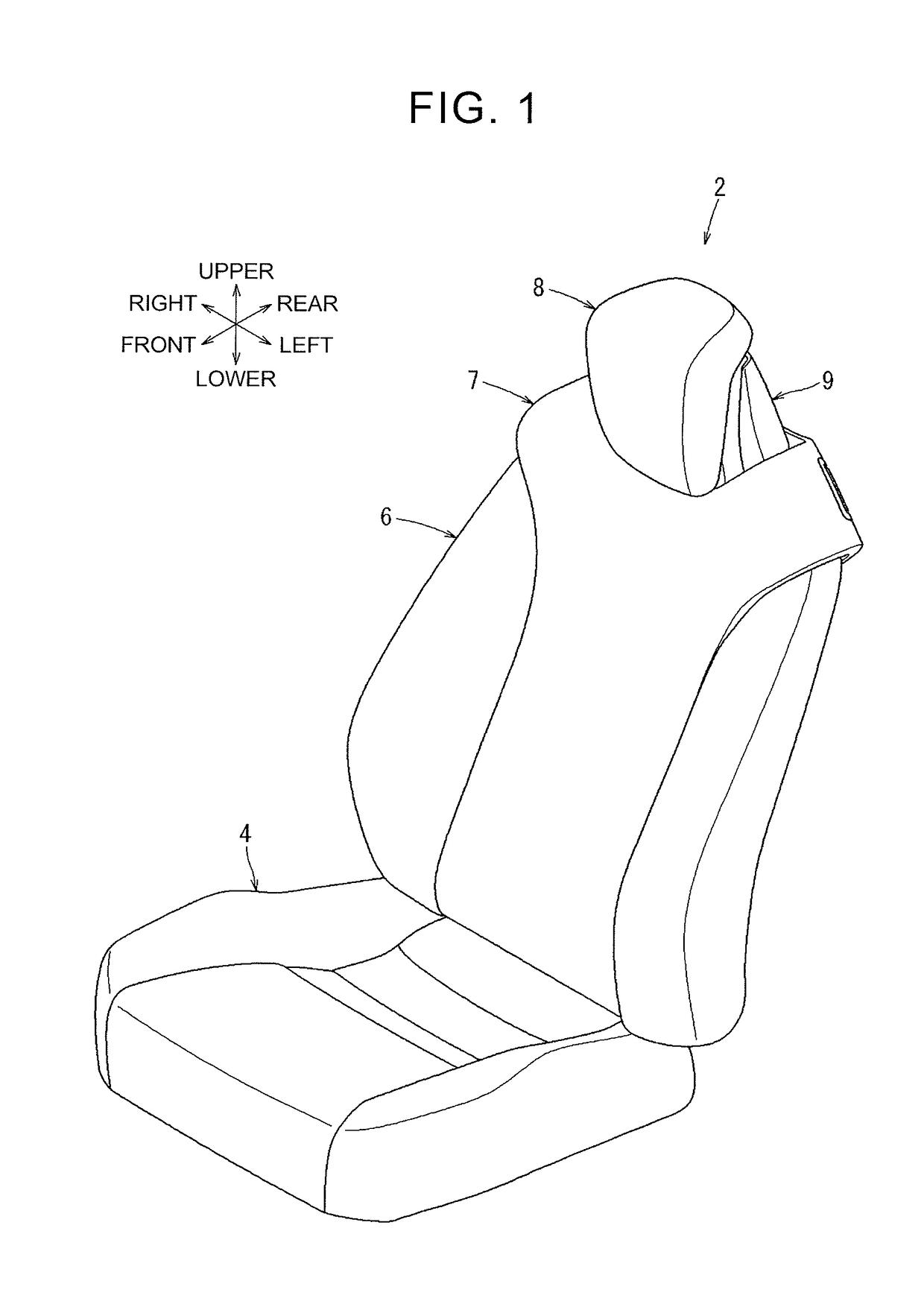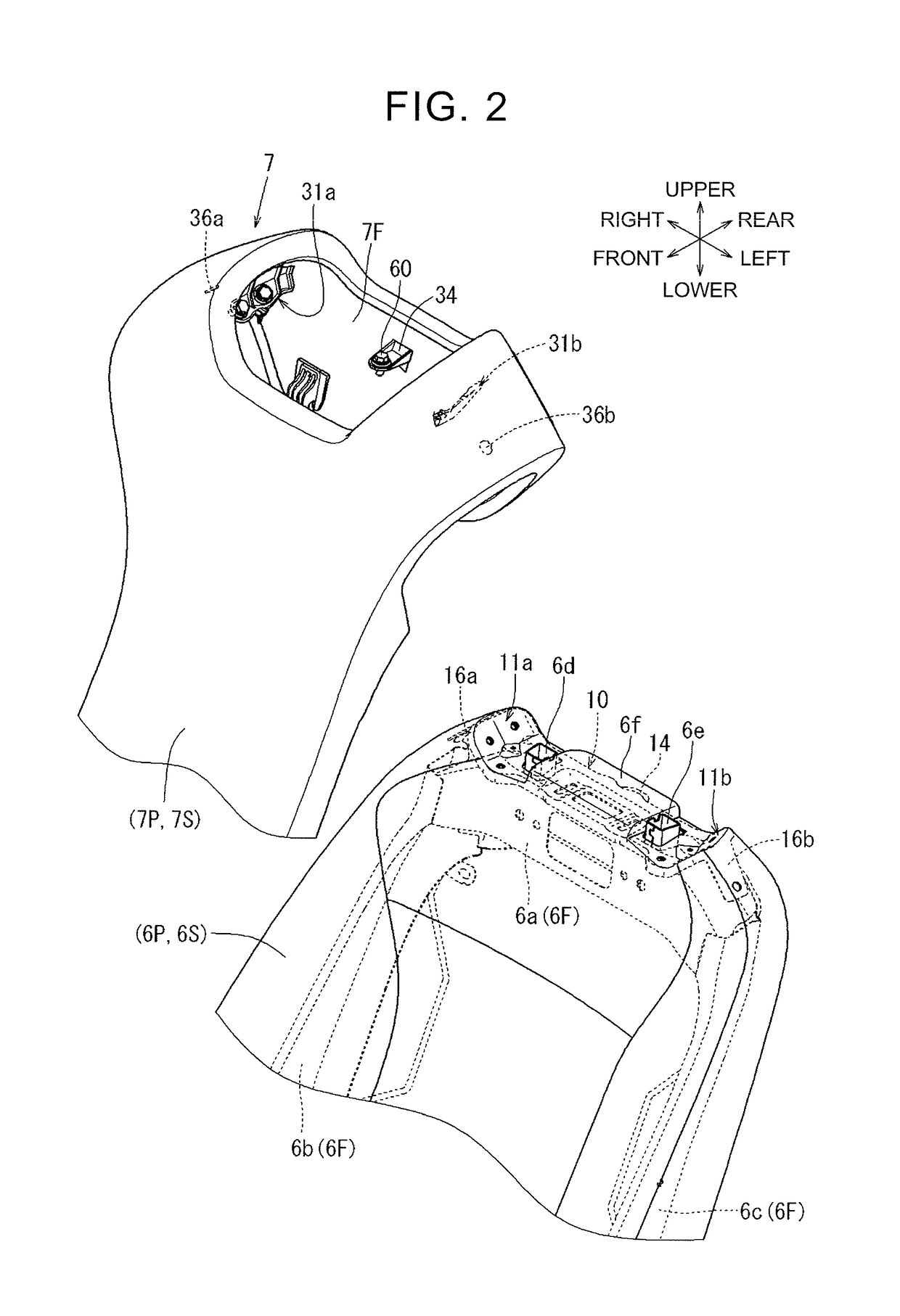Fastener for fastening a resin component
a technology for fasteners and resin components, applied in the direction of threaded fasteners, mechanical equipment, transportation and packaging, etc., can solve the problems of manufacturing cost, inability to easily employ in terms of improving workability, and time-consuming detachment of bushets, so as to improve workability and reduce manufacturing costs. , the effect of easy us
- Summary
- Abstract
- Description
- Claims
- Application Information
AI Technical Summary
Benefits of technology
Problems solved by technology
Method used
Image
Examples
example 2
[0063]In Example 2, for those members having substantially the same basic configurations as the constituent members of Example 1, a detailed description thereof will be omitted by assigning corresponding reference symbols thereto or the like. Referring to FIG. 11, Example 2 differs from Example 1 in that an upper insertion hole 40H in the form of an elongated hole is provided in a middle fastening seat 40. The upper insertion hole 40H is an arc-shaped elongated hole that is elongated in the right-left direction and is gradually curved forward as approaching its right and left ends. Further, projecting portions 45a are respectively provided at the front upper edge and the rear upper edge of the upper insertion hole 40H, and each extend in the right-left direction along the corresponding upper edge. In this Example, a fastener 50 inserted through the upper insertion hole 40H can be relatively moved relatively largely in a longitudinal direction D3 of the upper insertion hole 40H. Ther...
example 3
[0064]In Example 3, for those members having substantially the same basic configurations as the constituent members of Example 1, a detailed description thereof will be omitted by assigning corresponding reference symbols thereto or the like. Referring to FIGS. 12 to 15, Example 3 differs from Example 1 in that a fastener 90 is a member that serves as a nut, and in that there is provided a configuration for preventing the rotation of the fastener 90 with respect to an upper insertion hole 43H of a middle fastening seat 43. Referring to FIG. 12, the fastener 90 of this Example includes an insertion hole portion 91, an insertion portion 92, a flange portion 94 having the same configuration as in Example 1, and a pair of recessed portions 96. While the insertion hole portion 91 has substantially the same configuration as in Example 1, the insertion hole portion 91 is provided on its inner surface with a screw groove that can be screwed on a shaft portion 60b of a bolt member 60 shown i...
PUM
 Login to View More
Login to View More Abstract
Description
Claims
Application Information
 Login to View More
Login to View More - R&D
- Intellectual Property
- Life Sciences
- Materials
- Tech Scout
- Unparalleled Data Quality
- Higher Quality Content
- 60% Fewer Hallucinations
Browse by: Latest US Patents, China's latest patents, Technical Efficacy Thesaurus, Application Domain, Technology Topic, Popular Technical Reports.
© 2025 PatSnap. All rights reserved.Legal|Privacy policy|Modern Slavery Act Transparency Statement|Sitemap|About US| Contact US: help@patsnap.com



